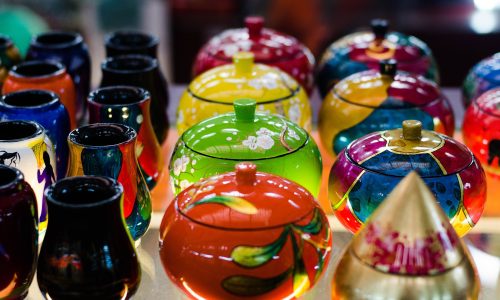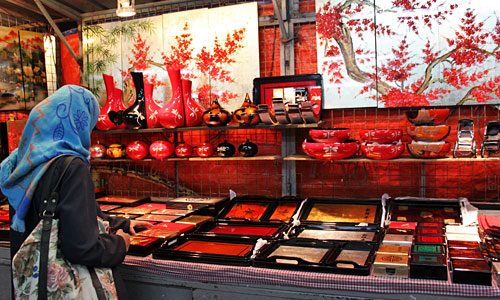Vietnamese Lacquerware Shines
21 march 2021
Heading to Vietnam without bringing back some lacquerware art, tableware or souvenirs is a bit like going to Vegas and not gambling. And much like gambling, the fine art of Vietnamese lacquerware goes back thousands of years – although unlike betting on a craps table, when you hand over your money to the shop vendor, you know you’ll at least return home with something other than an empty wallet.
The bummer with lacquer is that it’s become so widespread that you can find it at most any tourist stand in Asia. A lot of it is fake or of low quality, churned out by the ton by factories to keep costs down. But in Vietnam, real lacquerware – usually paintings on wood coated with the viscous sap of the Tixocodendron vernicifluum tree – is an art form that carries with it centuries of tradition and skill, a product of turbulent wars and cultural blending going back generations.
While lacquering has long been used to give wood products a protective and durable coat, the art of lacquer painting is relatively recent. In 1925 the French then-rulers of the country set up the École Superieure de Beaux Arts d’Indochine in Hanoi. The school set out to nurture and develop the latent talent that had lain dormant in local artisans who lacked an outlet, and channeled it into more structured expression. Training in European art methodology merged with Asian techniques and folk art influences and an entire new category of art was formed. When the French left in 1954, the art form was pursued with a new sense of vigor and national pride.
The country of Vietnam has been heavily impacted – some would say manhandled – by various powers and cultures throughout the years. Influences from Chinese dynastic struggles to French colonialism, to modern war and capitalism are reflected in the colors, emotion, and celebration of the scenes that the talented artists create.
Intricate pieces can take many months to create. Layer by layer, the base is laid down, then covered with a rough cloth. This is coated again, sanded down, built up with further coats of lacquer, and polished. Only then does painting begin. Materials like mother of pearl, metals, sawdust, and even eggshells can be used to create depth and texture.


In recent decades, modern lacquer artists have foregone the more traditional methods of 2D art created with a paintbrush. Contemporary painters use trowels, hammers, chisels, brooms, and even their hands to create large, abstract works with rough edges and various materials more akin to something Jackson Pollock, Gustav Klimt, or Mark Rothko would create. Some of the country’s more celebrated artists have had showings around the world, with collectors paying six-figure sums to hang the pieces in embassies, mansions, and cavernous galleries from Sydney to New York.
Many museums throughout the country have fine collections of lacquer art on display, and galleries are more than happy to show you pieces big and small for purchase. We have a few good friends who have their own galleries and workshops, let our team know if you’re interested in seeing what’s available, and we’ll make it happen.
